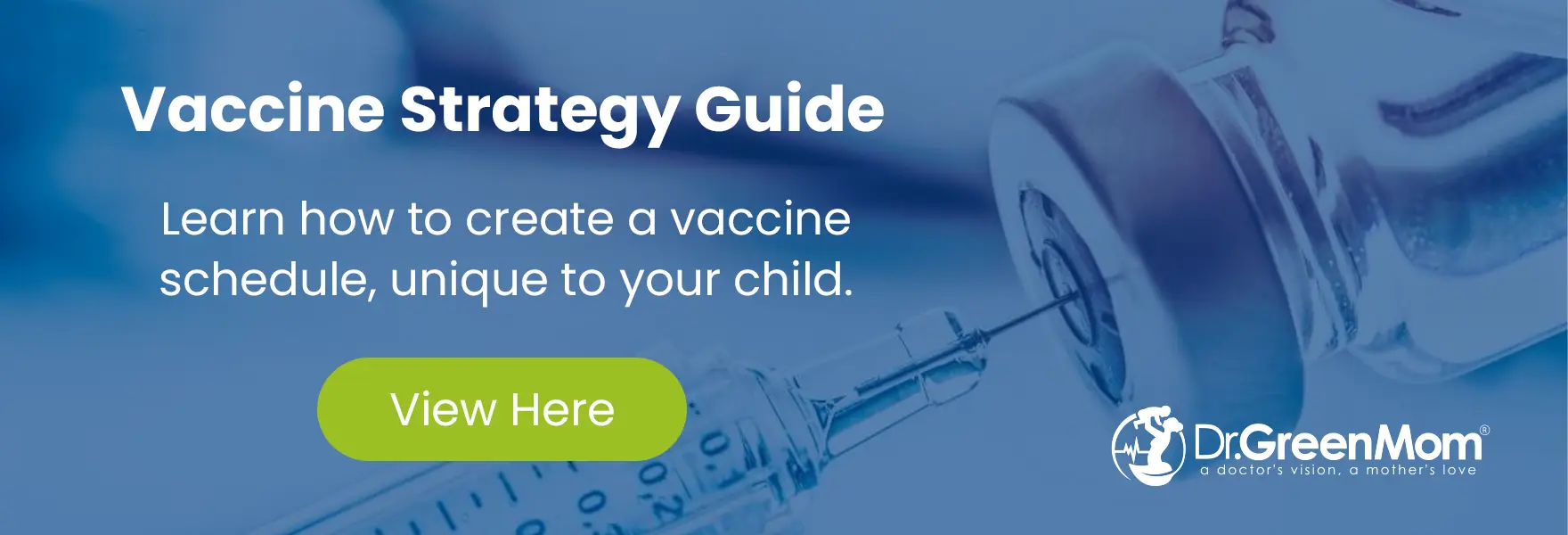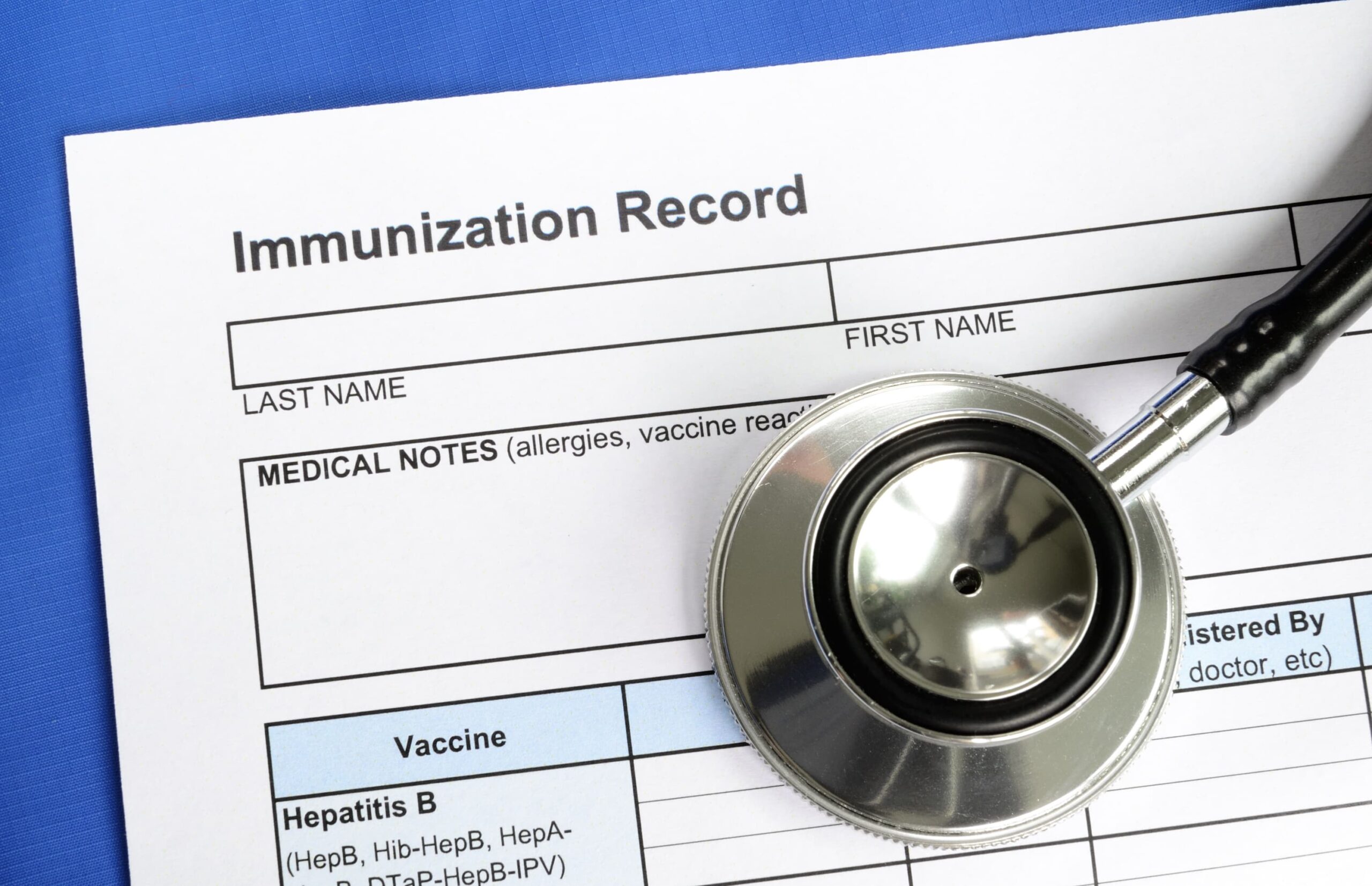- What is Hepatitis B?
- How is Hepatitis B Contracted?
- Hepatitis B Symptoms
- Conventional Treatment for Hepatitis B
- When is the Hepatitis B Vaccine Given?
- Efficacy of the Hepatitis B Vaccine
- How long does the Hepatitis B Vaccine last?
- Ingredients in Injected Hepatitis B Vaccines
- Hepatitis B Vaccine FDA Package Inserts
- Controversy and the Hepatitis B Vaccine
- Hepatitis B Vaccine Reactions
- Who Should Not Get the Hepatitis B Vaccine?
- The Hepatitis B Vaccine and The Bottom Line
What is Hepatitis B?
Hepatitis B is a liver infection caused by the hepatitis B virus (HBV), which can range from a mild illness lasting a few weeks to a serious lifelong condition. Chronic hepatitis B can lead to severe health complications, including cirrhosis, liver failure, and liver cancer (1). Hepatitis B is diagnosed with a blood test.
How is Hepatitis B Contracted?
The virus spreads through contact with infected bodily fluids, such as blood, semen, and vaginal secretions.
Common transmission routes include birth from an infected mother, unprotected sexual contact, sharing of needles or syringes, and sharing of personal items like razors or toothbrushes that may have blood on them (1).
Hepatitis B Symptoms
Mild Symptoms:
- Fatigue: Individuals may experience a general sense of tiredness or weakness.
- Loss of Appetite: A decreased desire to eat is common.
- Low-Grade Fever: Some may develop a mild fever.
- Nausea and Vomiting: Feelings of sickness and episodes of vomiting can occur.
- Abdominal Discomfort: Pain or discomfort, particularly in the upper right side of the abdomen, is typical.
Moderate Symptoms:
- Dark Urine: Urine may appear darker than usual.
- Joint Pain: Aching or discomfort in the joints can be a symptom.
- Jaundice: Yellowing of the skin and the whites of the eyes may develop as the condition progresses.
Severe Symptoms:
- Chronic Infection: While many adults recover fully from acute hepatitis B, some individuals, especially those infected at a younger age, may develop chronic hepatitis B. This long-term infection can persist for life and may lead to serious health issues.
- Cirrhosis: Chronic hepatitis B can cause scarring of the liver, impairing its ability to function correctly.
- Liver Cancer: Individuals with chronic hepatitis B have an increased risk of developing liver cancer.
- Liver Failure: Severe cases can lead to liver failure, a life-threatening condition requiring urgent medical attention.
Complications:
- Global Impact: Hepatitis B is a major global health concern, with an estimated 820,000 deaths annually due to complications such as cirrhosis and liver cancer.
- Chronic Infection Rates: Approximately 5% of adults infected with HBV become chronically infected, whereas the rate is higher in infants and children.
- Asymptomatic Cases: Many individuals with chronic hepatitis B remain asymptomatic for years, making early detection and management challenging.
Note: The severity and presence of symptoms can vary widely among individuals. Some people, especially children, may not exhibit noticeable symptoms during the acute phase of infection (2,3,4).
Infants who contract HBV face a substantial risk of developing chronic hepatitis B. Approximately 90% of infected infants and 30% of children infected between the ages of one and five will remain chronically infected. In contrast, about 95% of adults recover completely from acute HBV infection and do not become chronically infected (3).
Chronic HBV infection acquired in infancy can lead to severe liver diseases later in life, including cirrhosis and liver cancer. Notably, 25% of infants who become chronically infected are at risk of these life-threatening conditions (5).
Conventional Treatment for Hepatitis B
There is no specific medical treatment for Hepatitis B, and the virus must run its course; however, those who contract it develop lifelong immunity (2).
Interferon-alpha (IFN-α) has been used for many years to treat chronic hepatitis B, but it is not always very effective and can cause significant side effects. While it can help some people clear the virus, success rates range from only 25% to 50%, meaning many patients do not respond well to the treatment. It is usually given for a limited time, making it an option for those who want to avoid long-term medication. However, due to its lower success rate and side effects, it is not the first choice for most patients (6).
Nucleos(t)ide analogues (NAs), such as entecavir and tenofovir, are now the preferred treatment for chronic hepatitis B. These medications work by blocking the virus from making copies of itself, helping to reduce the amount of virus in the body. Long-term use of these drugs has been shown to reduce liver damage, improve liver function, and even reverse fibrosis (scarring of the liver). In one study, nearly 96% of patients improved liver health after using these medications for six years.
While interferon treatment is still an option, NAs are more effective, easier to tolerate, and safer for long-term use. Most people with chronic hepatitis B will be treated with these oral medications rather than interferon (7,8).
When is the Hepatitis B Vaccine Given?
Doses of the hepatitis B vaccine are given at birth, one month, and six months of age (9).
For more information, see CDC/Alternative Vaccine Schedules.
Efficacy of the Hepatitis B Vaccine
Over 90% of infants, children, adolescents, and healthy adults under 40 years of age develop protective antibody response following a complete vaccination series. A complete series is 80 to 100% effective in preventing infection or clinical hepatitis (10).
How long does the Hepatitis B Vaccine last?
According to the World Health Organization (WHO), the hepatitis B vaccine protects against hepatitis B for at least 20 years and probably for life (4).
Ingredients in Injected Hepatitis B Vaccines
Below is an overview of the components found in HAV products.
RECOMBIVAX (Merck)
- hepatitis B surface antigen
- Aluminum— 500 mcg/dose
- Saline solution
- Yeast proteins
- Formaldehyde— a residual amount
ENERGIX-B (GlaxoSmithKline)
- Hepatitis B surface antigen
- Aluminum – 250 mcg/dose
- Saline solution
- Phosphate buffers
- Yeast proteins
Note: Adults receive a double dose of the hepatitis B vaccine, so each adult dose contains 0.5 mg – 1 g of aluminum.
CONTROVERSIAL INGREDIENTS IN THE POLIO VACCINE
- Hepatitis B Surface antigen – This is a surface protein on the Hepatitis B virus that stimulates an immune response without causing infection. Since it is not a live virus, it cannot replicate or cause disease.
- Aluminum – Aluminum salts are commonly used in vaccines as adjuvants to enhance the immune response. While generally considered safe, some people question the long-term effects of aluminum exposure, particularly in infants.
- Formaldehyde – Formaldehyde is used in the manufacturing process of some vaccines to inactivate viruses and bacteria, preventing them from causing infection.
- Yeast Proteins – Yeast-derived proteins produce the hepatitis B vaccine since the vaccine antigen is synthesized using recombinant DNA technology in yeast cells. While generally well tolerated, individuals with severe yeast allergies should consult their healthcare provider before vaccination.
If you would like specific information, including studies, regarding each ingredient, see Vaccine Ingredients.
Hepatitis B Vaccine FDA Package Inserts
- RECOMBIVAX (Merck)
- ENERGIX-B (GlaxoSmithKline)
- Pediarix (GlaxoSmithKline) DTaP, hep B, and polio combo
- Twinrix (GlaxoSmithKline) Hep B and hep A combo
- Heplisav-B (Dynavax) A two-dose hepatitis B vaccine approved for use in adults aged 18 and older
- Vaxelis (Sanofi and Merck): A combination vaccine that protects against six diseases: diphtheria, tetanus, pertussis, poliomyelitis, Haemophilus influenzae type b, and hepatitis
Controversy and the Hepatitis B Vaccine
Do infants need the Hepatitis B vaccine?
The hepatitis B vaccine was initially recommended for individuals at high risk of infection, including intravenous drug users, sexually active individuals with multiple partners, and infants born to mothers infected with hepatitis B.
Due to low vaccination rates among high-risk adults and the continued spread of hepatitis B among individuals without identifiable risk factors, the Centers for Disease Control and Prevention (CDC) implemented a universal infant vaccination strategy.
While newborns do have the highest risk of developing chronic hepatitis B if exposed, given the low exposure rates (unless the mother is positive for hepatitis B), this strategy is primarily driven by the need to protect an adult population (10,11).
Does the Hepatitis B vaccine cause autoimmune diseases?
In the late 1990s, concerns were raised that the hepatitis B surface antigen contained in the vaccine could trigger autoimmune responses in vulnerable adults.
In the late 1990s, rheumatologists noted that hepatitis B vaccination could potentially trigger the onset of underlying inflammatory or autoimmune rheumatic diseases (12,13).
Individuals who received the hepatitis B vaccine had a statistically significant, more than twofold increased risk of developing systemic lupus erythematosus (14).
Bonnie Dunbar, PhD, published a personal testimony of two case reports of HBV causing serious neurological and autoimmune illnesses post-vaccination (15).
It is important to note that these are observational studies; they do not show a causal link. One cannot say that the vaccine “causes” these autoimmune outcomes. The CDC denies that vaccines cause autoimmune disease (16).
Hepatitis B Vaccine Reactions
SIGNS TO LOOK FOR:
- Fatigue
- Fever >99.5°F (37.5°C)
- Induration, redness, and swelling of the injection site
- Headache (17)
KNOWN SEVERE REACTIONS:
- The CDC acknowledges the remote possibility of injury or death after vaccination; however, statistics are unavailable.
- Seizures are not listed as a severe side effect risk for the hepatitis B vaccine, unlike other vaccines (MMR, DTap, for example) (17)
POSTMARKETING SURVEILLANCE:
RECOMBIVAX
The following additional adverse events, regardless of causality, have been reported during postmarketing use of RECOMBIVAX (18):
- Immune System Disorders: Hypersensitivity reactions, including anaphylactic/anaphylactoid reactions, bronchospasm, and urticaria, have been reported within the first few hours after vaccination. An apparent hypersensitivity syndrome (serum-sickness-like) of delayed onset has been reported days to weeks after vaccination, including arthralgia/arthritis (usually transient), fever, and dermatologic reactions such as urticaria, erythema multiforme, ecchymoses and erythema nodosum.
- Autoimmune diseases, including systemic lupus erythematosus (SLE), lupus-like syndrome, vasculitis, and polyarteritis nodosa, have also been reported.
- Gastrointestinal Disorders: Elevation of liver enzymes; constipation
- Nervous System Disorders: Guillain-Barré syndrome; multiple sclerosis; exacerbation of multiple sclerosis; myelitis including transverse myelitis; seizure; febrile seizure; peripheral neuropathy including Bell’s Palsy; radiculopathy; herpes zoster; migraine; muscle weakness; hypesthesia; encephalitis
- Skin and Subcutaneous Disorders: Stevens-Johnson syndrome; alopecia; petechiae; eczema
- Musculoskeletal and Connective Tissue Disorders: Arthritis Pain in extremity
- Blood and Lymphatic System Disorders: Increased erythrocyte sedimentation rate; thrombocytopenia
- Psychiatric Disorders: Irritability; agitation; somnolence Eye Disorders Optic neuritis; tinnitus; conjunctivitis; visual disturbances; uveitis
- Cardiac Disorders: Syncope; tachycardia
ENERGIX-B
The following additional adverse events, regardless of causality, have been reported during postmarketing use of ENERGIX-B (19):
- Infections and Infestations: Herpes zoster, meningitis.
- Blood and Lymphatic System Disorders: Thrombocytopenia.
- Immune System Disorders: Allergic reaction, anaphylactoid reaction, or anaphylaxis. An apparent hypersensitivity syndrome (serum sickness-like) of delayed onset has been reported days to weeks after vaccination, including arthralgia/arthritis (usually transient), fever, and dermatologic reactions such as urticaria, erythema multiforme, ecchymoses, and erythema nodosum.
- Nervous System Disorders: Encephalitis; encephalopathy; migraine; multiple sclerosis; neuritis; neuropathy including hypoesthesia, paresthesia, Guillain-Barré syndrome and Bell’s palsy; optic neuritis; paralysis; paresis; seizures; syncope; transverse myelitis.
- Eye Disorders: Conjunctivitis, keratitis, visual disturbances. Ear and Labyrinth Disorders Earache, tinnitus, vertigo.
- Cardiac Disorders: Palpitations, tachycardia. Vascular Disorders Vasculitis
- Respiratory, Thoracic, and Mediastinal Disorders: Apnea, bronchospasm including asthma-like symptoms.
- Gastrointestinal Disorders: Dyspepsia.
- Skin and Subcutaneous Tissue Disorders: Alopecia, angioedema, eczema, erythema multiforme including Stevens-Johnson syndrome, erythema nodosum, lichen planus, purpura.
- Musculoskeletal and Connective Tissue Disorders: Arthritis, muscular weakness.
- General Disorders and Administration Site Conditions Injection site reaction.
- Investigations: Abnormal liver function tests.
Who Should Not Get the Hepatitis B Vaccine?
The CDC recommends that anyone who meets the following criteria should not get Hepatitis B vaccine (HBV):
- Persons who have had a severe allergic reaction (e.g., anaphylaxis) after a previous dose of the HBV vaccine or have a severe allergy to an HBV vaccine component should not receive the HBV vaccine (19).
Note: According to the CDC, anyone who is moderately or severely ill when the shot is scheduled should wait to get an HBV. At Dr. Green Mom, we recommend rescheduling even for mild illnesses when the risk for Hepatitis B is low and rescheduling is feasible.
The Hepatitis B Vaccine and The Bottom Line
Before the introduction of the hepatitis B vaccine in 1982, hepatitis B virus (HBV) infection posed a significant global health threat. In 2013, HBV was responsible for approximately 686,000 deaths worldwide, equating to an age-standardized death rate of 5.9 per 100,000 individuals (20).
HBV is primarily transmitted through exposure to infectious body fluids, including blood, semen, and vaginal fluids. Common transmission routes include perinatal transmission from mother to child, unsafe injection practices, transfusions of unscreened blood, and sexual contact (10).
The case-fatality rate for acute HBV infection varies by age and health status. Acute liver failure, a severe complication, occurs in 0.5%–1.0% of adult cases, with a case-fatality rate of 20%–33% (21).
Chronic HBV infection significantly increases the risk of developing cirrhosis and hepatocellular carcinoma (primary liver cancer). In 2022, hepatitis B resulted in an estimated 1.1 million deaths, mainly from these complications (4).
The hepatitis B vaccine has proven highly effective in preventing HBV infection. Field trials have demonstrated an 80%–95% efficacy in preventing disease or hepatitis among susceptible individuals. Moreover, the vaccine has been shown to provide long-term protection, with studies indicating sustained immunity decades after primary immunization (22).
In summary, the hepatitis B vaccine is critical in reducing the global burden of hepatitis B infection and its associated complications. Infant vaccination is primarily a strategy to reduce the burden of hepatitis B in adult populations, those engaging in high-risk behaviors or travelling to areas where hepatitis B may be more prevalent. It is not a disease that typically infects infants unless the mother is hepatitis B positive.
References:
- Centers for Disease Control and Prevention. (2025, January 31). Hepatitis B Basics. U.S. Department of Health & Human Services. https://www.cdc.gov/hepatitis-b/about/index.html
- Centers for Disease Control and Prevention. (2024, Jan 12). Symptoms of Hepatitis B. U.S. Department of Health & Human Services. https://www.cdc.gov/hepatitis-b/signs-symptoms/
- Centers for Disease Control and Prevention. (2025, Jan 31). Clinical overview of Hepatitis B. U.S. Department of Health & Human Services. https://www.cdc.gov/hepatitis-b/hcp/clinical-overview/index.html.
- World Health Organization. (2024, Apr 9). Hepatitis B. https://www.who.int/news-room/fact-sheets/detail/hepatitis-b
- Centers for Disease Control and Prevention. (2025, Jan 31). Clinical Overview of Perinatal Hepatitis B. U.S. Department of Health & Human Services. https://www.cdc.gov/hepatitis-b/hcp/perinatal-provider-overview/index.html.
- Zhang, Z., Zou, G., & Xu, L. (2021). Interferon and Hepatitis B: Current and Future Perspectives. Frontiers in Immunology, 12, 733364. https://doi.org/10.3389/fimmu.2021.733364
- Shen, F., Wang, Y., Jiang, D., & Zhou, H. (2021). Advances in the treatment of chronic hepatitis B: From interferon to oral nucleos(t)ide analogs. World Journal of Hepatology, 13(9), 1137-1153. https://www.ncbi.nlm.nih.gov/pmc/articles/PMC8452902/
- Hou, J., Yin, Y., Wu, C., & Cheng, J. (2020). Current perspectives on nucleos(t)ide analogue therapy for the long-term management of chronic hepatitis B. Hepatic Medicine: Evidence and Research, 12, 75-86. https://www.dovepress.com/current-perspectives-on-nucleostide-analogue-therapy-for-the-long-term-peer-reviewed-fulltext-article-HMER
- Centers for Disease Control and Prevention. (2024, Nov 21). Child and adolescent immunization schedule by Age. U.S. Department of Health & Human Services. https://www.cdc.gov/vaccines/hcp/imz-schedules/child-adolescent-age.html
- Centers for Disease Control and Prevention. (1991). Hepatitis B virus: A comprehensive strategy for eliminating transmission in the United States through universal childhood vaccination: Recommendations of the Immunization Practices Advisory Committee (ACIP). MMWR, 40(RR-13), 1-25. https://www.cdc.gov/mmwr/preview/mmwrhtml/00033405.htm
- Centers for Disease Control and Prevention. (2021). Epidemiology and Prevention of Vaccine-Preventable Diseases. Hamborsky J, Kroger A, Wolfe S, eds. 14th ed. Washington D.C. Public Health Foundation. Chapter 10: Hepatitis B. https://www.cdc.gov/pinkbook/hcp/table-of-contents/chapter-10-hepatitis-b.html
- Maillefert, J. F., Sibilia, J., Toussirot, É., et al. (1999). Rheumatic disorders developed after hepatitis B vaccination. Lupus, 8(10), 790–793. https://pubmed.ncbi.nlm.nih.gov/10534549/
- Pope, J. E., Stevens, A., Howson, W., & Bell, D. A. (1998). The development of rheumatoid arthritis after recombinant hepatitis B vaccination. The Journal of Rheumatology, 25(9), 1687–1693. https://pubmed.ncbi.nlm.nih.gov/9733447/
- Wang, M., Gu, H., Zhai, Y. et al. Vaccination and the risk of systemic lupus erythematosus: a meta-analysis of observational studies. Arthritis Res Ther 26, 60 (2024). https://doi.org/10.1186/s13075-024-03296-8
- Dunbar, B. (1998). Serious adverse reactions following hepatitis B vaccination: A report of 4 cases and discussion of vaccine policy. https://hepbvaccine.wordpress.com/wp-content/uploads/2012/03/bonnie-dunbar1.pdf
- Centers for Disease Control and Prevention. (2020, Aug 20). Hepatitis B vaccine and multiple sclerosis FAQs. U.S. Department of Health & Human Services. https://archive.cdc.gov/www_cdc_gov/vaccinesafety/concerns/history/hepb-faqs.html
- Centers for Disease Control and Prevention. (2024, July 30). Possible side effects from vaccines. U.S. Department of Health & Human Services. https://www.cdc.gov/vaccines/basics/possible-side-effects.html
- Merck & Co., Inc. (2018). Recombivax HB. Product insert from the vaccine manufacturer. https://www.fda.gov/files/vaccines%2C%20blood%20&%20biologics/published/package-insert-recombivax-hb.pdf
- Centers for Disease Control and Prevention. (2023). Who should not get vaccinated with these vaccines? U.S. Department of Health & Human Services. https://www.cdc.gov/vaccines/vpd/should-not-vacc.html
- Razavi-Shearer, D., et al. (2018). Global prevalence, treatment, and prevention of hepatitis B virus infection in 2016: A modelling study. The Lancet Gastroenterology & Hepatology, 3(6), 383-403.
- World Health Organization. (2018, Sep 4). Vaccine-preventable diseases surveillance standards: Hepatitis B. https://www.who.int/publications/m/item/vaccine-preventable-diseases-surveillance-standards-hepb
- Guan, R., & He, Y. (2022). Long-term efficacy of hepatitis B vaccine: A review. Frontiers in Immunology, 13, 969599. https://pmc.ncbi.nlm.nih.gov/articles/PMC9695994/
Reviewed/Updated: 03/25
Content Created: 04/14









